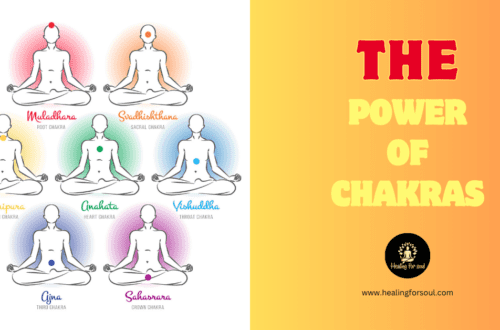Table of Contents
Silent mantra meditation, a timeless practice, holds the key to tranquility in our bustling modern lives. By chanting a mantra silently, we cultivate inner peace and focus. But what makes silent mantra meditation so unique and beneficial? Let’s delve into this ancient art and uncover its secrets.
What is Silent Mantra ?
Silent mantra meditation involves the mental repetition of a word or phrase. This “mantra” serves as a focal point, helping practitioners quiet their minds and achieve deeper states of consciousness. Unlike vocal chanting, silent repetition allows for an inward journey without external distractions.
The Origins and History of Mantra Meditation
The roots of mantra meditation trace back thousands of years, primarily to Hindu and Buddhist traditions. Ancient sages and monks used mantras as tools to connect with the divine and attain spiritual enlightenment. Despite its deep historical roots, silent mantra meditation remains relevant today, offering solace and clarity in our fast-paced world.
Why Choose Silent Mantra Meditation?
Silent mantra meditation provides a unique approach to mindfulness. Unlike other forms of meditation that may focus on breath or body awareness, silent mantra meditation engages the mind directly. By silently repeating a mantra, one can achieve a state of mental stillness and clarity, reducing stress and enhancing overall well-being.
Getting Started with Silent Meditation
To embark on your silent mantra meditation journey, follow these steps:
- Choose a Mantra: Select a word or phrase that resonates with you. Common choices include “Om,” “Peace,” or “Love.” Ensure your mantra is simple and meaningful.
- Find a Quiet Space: Create a serene environment free from distractions. Whether it’s a cozy corner of your home or a tranquil outdoor spot, choose a place where you feel comfortable.
- Sit Comfortably: Find a comfortable seated position. You can sit on a chair, cushion, or the floor, as long as your back is straight and your body is relaxed.
- Close Your Eyes: Gently close your eyes to eliminate visual distractions. This helps you turn your focus inward.
- Begin Repeating the Mantra: Silently repeat your chosen mantra in your mind. Focus on the sound and rhythm, allowing it to become your primary thought.
- Stay Present: If your mind wanders, gently bring your focus back to the mantra. Don’t worry about getting it perfect; meditation is a practice, not a performance.
Benefits of Silent Mantra
The advantages of silent mantra meditation extend beyond mere relaxation. Here are some compelling reasons to incorporate this practice into your daily routine:
- Reduces Stress: Repeating a calming mantra helps lower cortisol levels, reducing stress and promoting a sense of calm.
- Improves Concentration: By training the mind to focus on a single point, mantra meditation enhances concentration and mental clarity.
- Enhances Emotional Well-being: Silent mantra meditation fosters a positive mindset, reducing negative thoughts and emotions.
- Promotes Deep Relaxation: The rhythmic repetition of a mantra induces a state of deep relaxation, aiding in better sleep and overall well-being.
Scientific Insights on Mantra Meditation
Recent studies have shed light on the science behind mantra meditation. Researchers have found that silent mantra meditation activates areas of the brain associated with relaxation and mindfulness. This practice can also reduce symptoms of anxiety and depression, proving its effectiveness in mental health care.
Common Mantras for Silent
Choosing the right mantra is crucial. Here are some popular mantras you can use:
- “Om”: Often considered the sound of the universe, “Om” is a powerful mantra that promotes universal connection and peace.
- “Shanti”: Meaning “peace” in Sanskrit, this mantra calms the mind and soul.
- “So Hum”: Translated as “I am that,” this mantra encourages self-awareness and connection with the universe.
- “Love”: A simple yet profound mantra that fosters feelings of love and compassion.
Tips for a Successful Meditation Practice
Establishing a consistent meditation practice can be challenging. Here are some tips to help you stay on track:
- Start Small: Begin with just a few minutes each day and gradually increase the duration as you become more comfortable.
- Be Patient: Meditation is a journey. Don’t be discouraged if you find it difficult to focus initially.
- Create a Routine: Meditate at the same time each day to build a habit. Morning or evening sessions can be particularly effective.
- Keep a Journal: Documenting your meditation experiences can provide insights into your progress and challenges.
Incorporating Silent Mantra Meditation into Daily Life
You don’t need to retreat to a monastery to benefit from silent mantra meditation. Here are practical ways to integrate this practice into your daily routine:
- Morning Meditation: Start your day with a few minutes of silent mantra meditation to set a positive tone.
- Stress Relief: Take short meditation breaks during stressful situations to regain composure and clarity.
- Bedtime Routine: End your day with a calming mantra meditation to promote restful sleep.
Silent Mantra Meditation for Mental Health
The mental health benefits of silent mantra meditation are profound. Regular practice can reduce symptoms of anxiety, depression, and other mental health issues. By fostering a sense of inner peace and self-awareness, mantra meditation provides a natural and effective way to enhance emotional well-being.
Common Misconceptions About Silent Mantra Meditation
There are several misconceptions surrounding silent mantra meditation. Let’s address some of the most common ones:
- “It’s Only for Spiritual People”: While mantra meditation has spiritual roots, anyone can practice it, regardless of their beliefs.
- “You Need to Clear Your Mind Completely”: The goal is not to have a completely empty mind but to focus and gently guide your thoughts.
- “It Takes Years to See Benefits”: While long-term practice deepens the benefits, many people experience positive changes after just a few sessions.
Success Stories and Testimonials
Many individuals have transformed their lives through silent mantra meditation. Here are a few inspiring stories:
- Sarah’s Journey: After struggling with anxiety for years, Sarah found solace in silent mantra meditation. With consistent practice, she experienced reduced anxiety and a greater sense of peace.
- John’s Transformation: As a busy executive, John faced constant stress. Incorporating mantra meditation into his daily routine helped him manage stress better and improved his overall well-being.
FAQs
What is the best time to practice silent mantra meditation?
The best time is when you can practice consistently. Many prefer morning or evening sessions.
How long should I meditate?
Start with 5-10 minutes and gradually increase to 20-30 minutes as you become more comfortable.
Do I need a special mantra?
No, choose a mantra that resonates with you. It can be a traditional Sanskrit word or a simple phrase in your native language.
Can children practice silent mantra meditation?
Yes, children can benefit from this practice. Use simple, age-appropriate mantras and keep sessions short.
What if I can’t focus on the mantra?
It’s normal for the mind to wander. Gently bring your focus back to the mantra without judgment.
Can silent mantra meditation help with insomnia?
Yes, it can promote relaxation and improve sleep quality when practiced regularly before bedtime.
Conclusion
Silent mantra meditation is a powerful tool for achieving inner peace and enhancing overall well-being. By integrating this practice into your daily routine, you can experience profound mental, emotional, and physical benefits. Whether you’re new to meditation or looking to deepen your practice, silent mantra meditation offers a simple yet effective path to tranquility and self-discovery.







